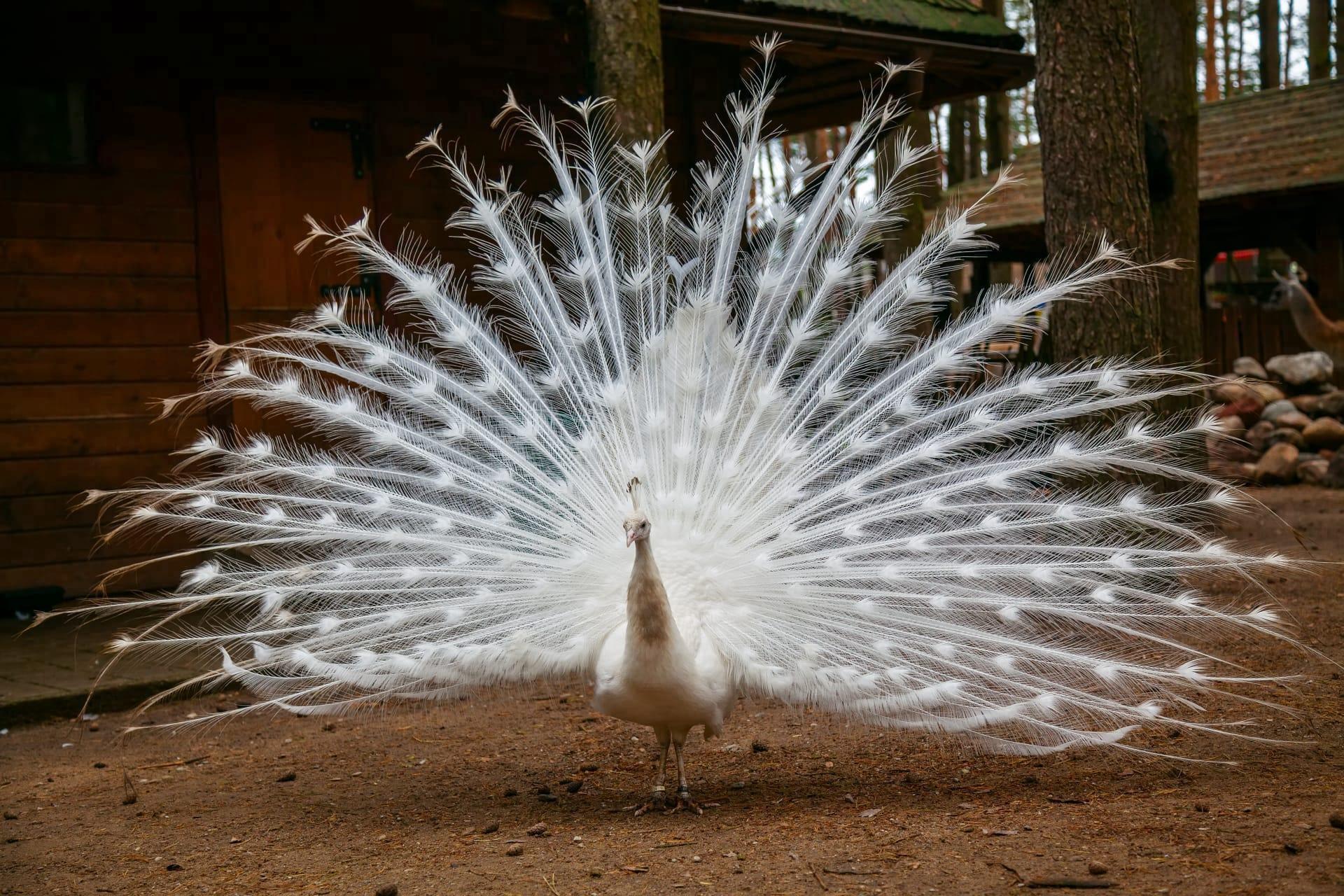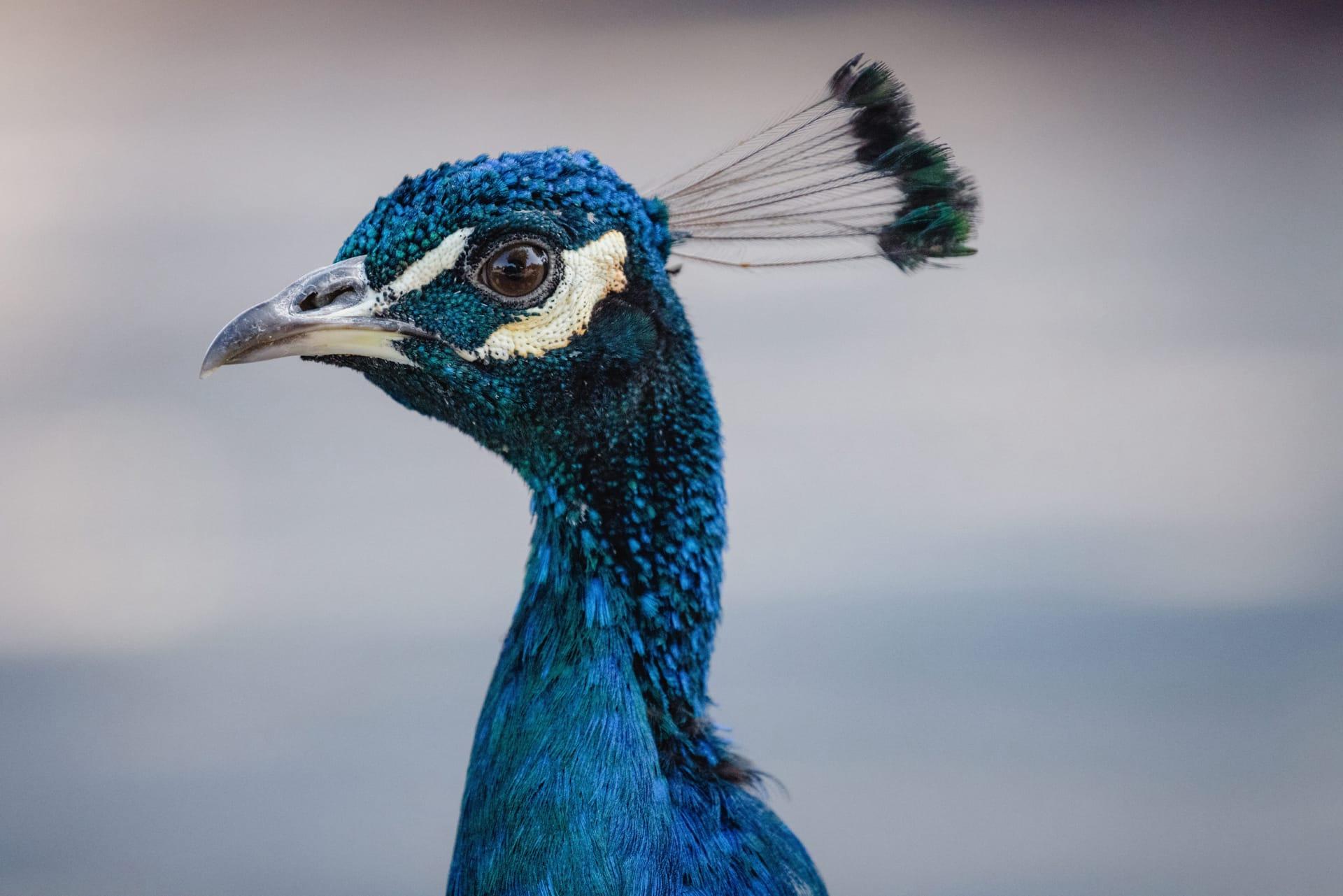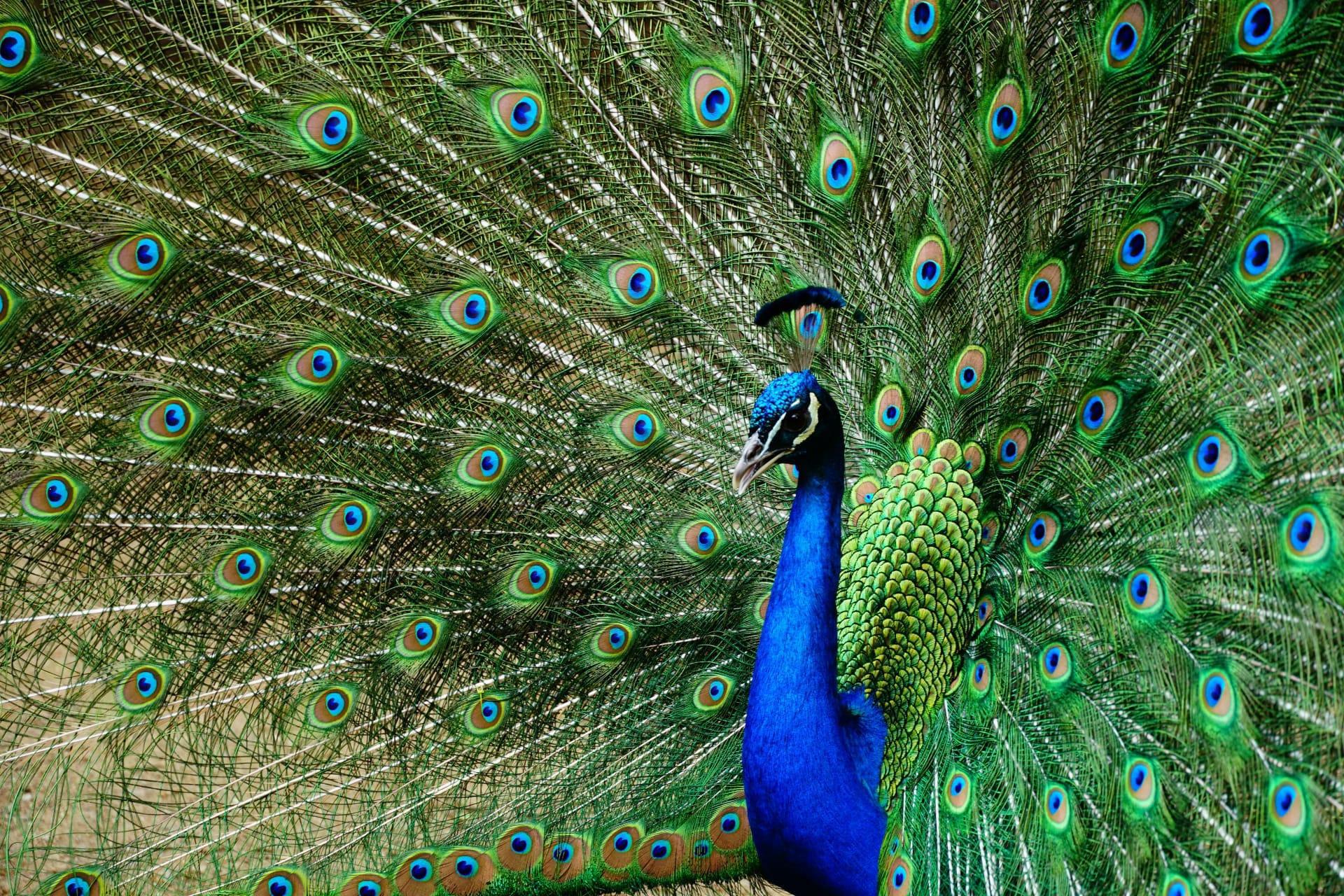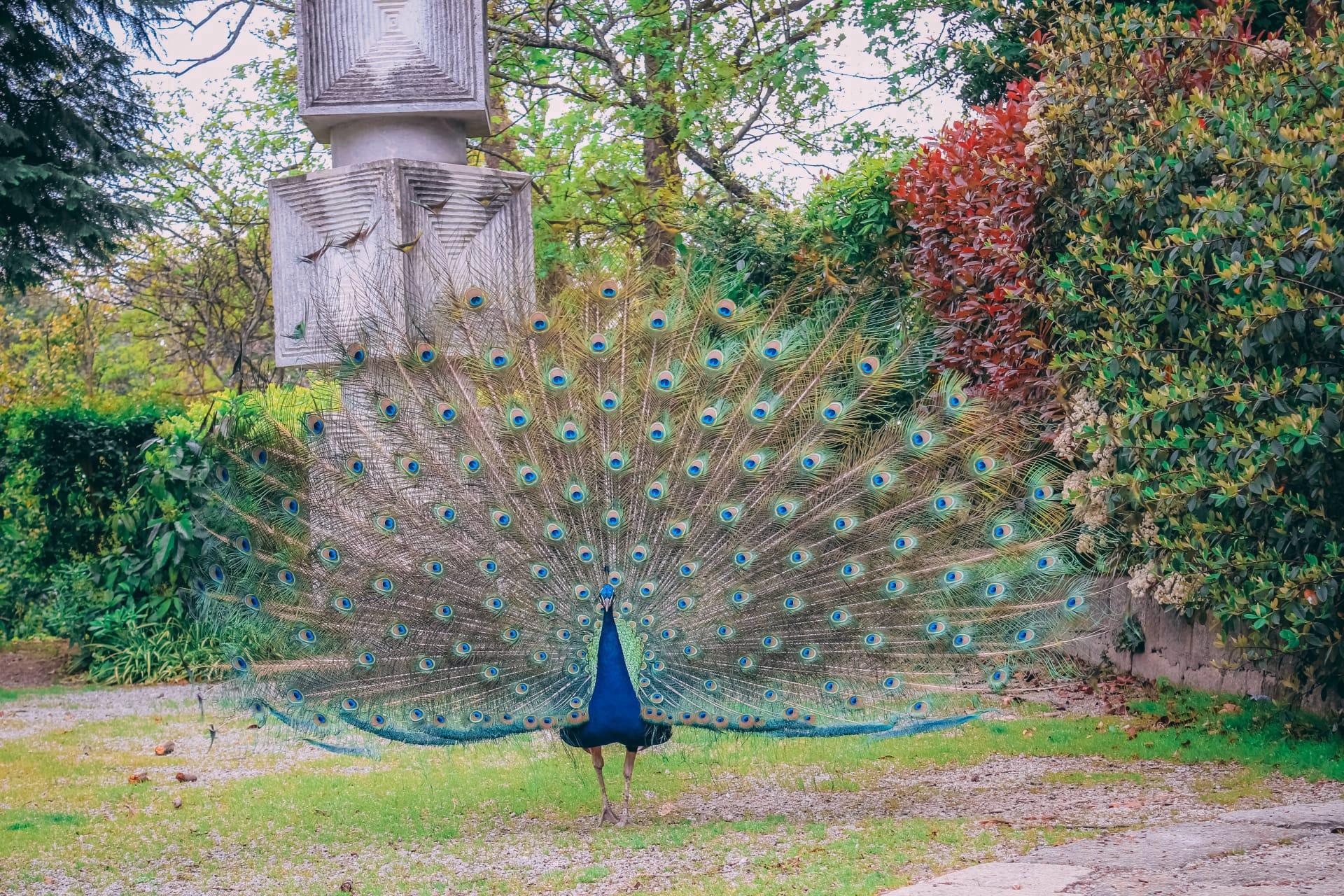Peacock
- Home /
- Mini Encyclopedia /
- Animal /
- Peacock
1
Peacocks, known scientifically as Pavo, are a genus within the Phasianidae family, which includes pheasants and partridges. This genus contains two well-known species: the Indian Peafowl, Pavo cristatus, and the Green Peafowl, Pavo muticus. The Indian Peafowl, often simply referred to as the peacock, is distinguished by its vibrant blue and green plumage and the iconic long tail feathers or "train". In contrast, the Green Peafowl, with a mix of green, blue, and bronze feathers, is less vivid but equally majestic.
Peacocks are native to the Indian subcontinent and Southeast Asia. The Indian Peafowl is predominantly found in India, Pakistan, and Sri Lanka, thriving in deciduous forests and cultivated areas. They have also been introduced in other parts of the world, such as the United States and Europe, where they live in parks and zoos. The Green Peafowl, on the other hand, has a more limited range, residing in the tropical and subtropical forests of Southeast Asia, including Myanmar, Thailand, Cambodia, Laos, and Vietnam. Their habitats are often threatened by deforestation and agricultural expansion, leading to a decline in their wild populations.

2
Question: Do male peacocks use their splendid tail feathers only for attracting females?
Answer: While it's a common belief that the primary function of a peacock's tail feathers is to attract mates, there's more to these spectacular displays. The elongated tail feathers, or 'train', of the male peacock, which can measure up to 60 inches in length, are indeed a crucial part of their mating ritual. The peacock fans out its feathers to exhibit a shimmering spectacle of iridescent colors and eye-like patterns, known as ocelli. This display is not just for attracting females but also plays a role in competitive displays against other males and predator deterrence. The vibrant colors and patterns make the peacock appear larger and more intimidating, serving as a visual warning to potential predators. So, while mate attraction is a significant factor, the peacock's tail serves multiple survival functions.

3
Peacocks employ a variety of survival strategies to thrive in their natural habitats. One notable feature is their vocalization; peacocks emit loud, high-pitched calls, especially during the breeding season. These calls serve multiple purposes: attracting females, signaling danger, and establishing territory. The Indian Peafowl, for instance, has a range of vocalizations, from mating calls to alarm calls that alert other birds to potential threats.
Another survival strategy is their diet. Peacocks are omnivores, feeding on a diverse diet that includes seeds, insects, fruits, and small vertebrates. This varied diet helps them adapt to different environments, from lush forests to human-modified landscapes. Additionally, peacocks are ground-nesters, laying eggs in concealed locations on the ground. This behavior, combined with their natural camouflage — the females and young peacocks have muted, earthy-toned plumage — helps protect them from predators.

4
In their ecosystems, peacocks play a vital role in maintaining ecological balance. As omnivores, they aid in seed dispersal and pest control. By consuming a variety of seeds, they help in the spread of various plant species. Their diet of insects and small creatures helps regulate the population of these organisms, preventing overpopulation and potential crop damage.
Peacocks also serve as an indicator species, meaning their presence or absence can reveal the health of their ecosystem. A thriving peacock population often indicates a healthy, biodiverse environment. Conversely, declining numbers can signal environmental degradation. Therefore, peacocks contribute to biodiversity both directly, through their role in the food chain, and indirectly, by serving as a gauge for environmental health.

5
Film: "The Dance of the Peacock" is a notable documentary from the United Kingdom, released in the late 2010s. This visually stunning film explores the life and habits of the Indian Peafowl in their natural habitat. It focuses on the intricate mating rituals, the survival challenges they face, and the impact of human activity on their environment.
Book: "Peacocks and Peahens: A Natural History" by Elizabeth Johnson, published in the United States in the early 2020s, provides an in-depth look into the world of peafowl. Johnson, a renowned ornithologist, delves into their biology, behavior, and the role they play in different cultures and ecosystems. Her book combines scientific research with engaging anecdotes, making it accessible to a broad audience.
Book: "The Secret Life of Peacocks" by David Attenborough, released in the United Kingdom in the mid-2020s, is another essential read. Attenborough, a celebrated naturalist and broadcaster, provides a captivating exploration of the peacock's life, from its dazzling courtship displays to its lesser-known survival tactics. The book is richly illustrated and includes insights from Attenborough's own experiences observing these magnificent birds in the wild.